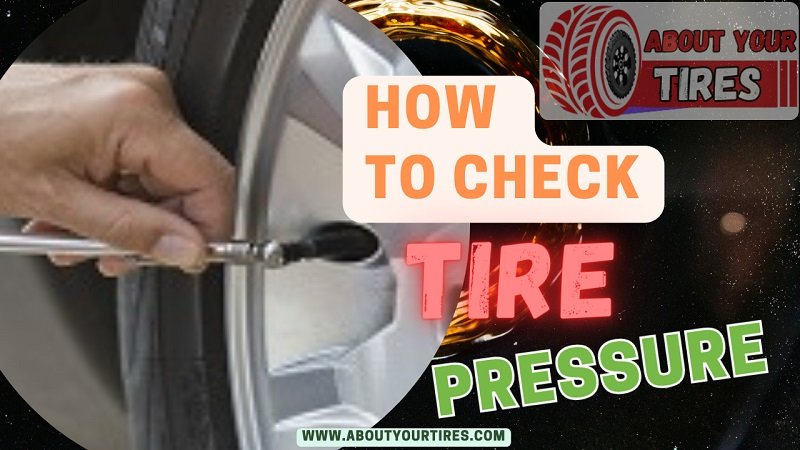Ensuring your tires are correctly inflated is a straightforward yet crucial aspect of tire maintenance. Familiarizing yourself with how to check air pressure in your tires is a valuable skill. However, if you find that your tires consistently run underinflated, it might be time to contemplate investing in new ones. You can also read our article on What Should My Tire Pressure Be.
Steps to Checking Your Tire Pressure

- Tire Cool Down: Begin by assessing your tire’s air pressure when the tires are cool, meaning they haven’t been driven on for several hours. Allowing them to cool down provides a more accurate reading.
- Vehicle Manufacturer’s Recommendation: Consult your vehicle’s manufacturer-recommended tire pressure, typically found on the door placard. This specification serves as your target PSI (Pounds per Square Inch).
- Check Tire Pressure: Utilize a dependable and precise tire pressure gauge to check the current pressure in your tires. It’s important to have a reliable gauge to ensure accurate readings.
- Inflate to Recommended PSI: If the current pressure deviates from the recommended PSI, add or release air as needed until each tire aligns with the manufacturer’s specified pressure.
When to Check Tire Pressure
- Regular Monthly Checks: It’s highly advisable to establish a monthly routine, say, on the first of each month, to check your tire pressure. Consistency and using the same gauge contribute to precise and reliable readings.
- Every 3,000 Miles or 4,500 Kilometers: Monitoring your tire pressure at these intervals helps maintain a smooth and even driving experience, which, in turn, enhances fuel efficiency.
- Infrequent Vehicle Use: If your vehicle doesn’t see frequent use, it’s a good practice to inspect your tire pressure every month to ensure they remain in top condition.
- Before Extended Journeys: Prior to embarking on long trips, it’s essential to verify that your tire pressure is in line with manufacturer recommendations for safe and efficient travel.
- Temperature Shifts: When there’s a temperature change of 10 degrees or more, it’s wise to recheck your tire pressure as temperature fluctuations can influence it.
What Does it Mean When Your TPMS Light Turns On?
The Tire Pressure Monitoring System (TPMS) light on your dashboard serves as an invaluable alert system. It illuminates when your tire pressure falls outside the acceptable range. In such cases, promptly pull over and examine all your tires to pinpoint the underinflated or overinflated ones. Adjust the air levels accordingly to meet the manufacturer’s specifications. If you encounter recurrent issues, it’s advisable to seek assistance from a professional service technician to address potential underlying problems.
Reference: How to Check Tire Pressure – Wikipedia.

